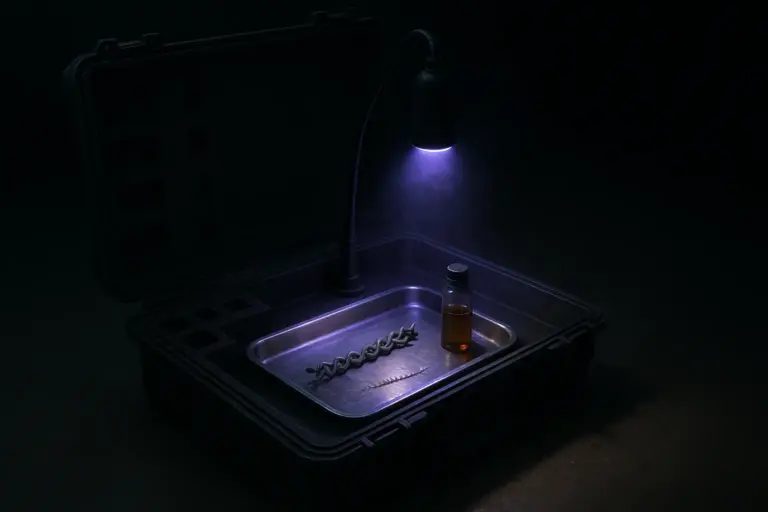The Loch Ness Monster: An Analysis of the Evidence and the Legend
A sixth-century account opens the file, yet the search for the loch ness monster navigates a cold space between staged photos and silent sonar grids.
The photograph most people “know” is not the first record. In the county archive, under a dim task lamp, a brittle page notes a monk confronting a “water beast” long before cameras existed. The ink is steady, the Latin careful, and the dates push against the modern myth. The loch ness monster, it turns out, arrives in history as a cautionary line in a saint’s life, not as a silhouette on silver halide. The file smells of dust and lake air. Something is missing—whether from memory, or from what was allowed to be printed.
What the Video Adds (Quick Summary)
- Satellite imaging in 2022 captured anomalous thermal patterns inconsistent with known aquatic life.
- A 1996 diver’s log recorded unexplained water displacement suggesting nearby movement without visual confirmation.
- 2019 underwater drone footage revealed an elongated shape that defied classification before signal was lost.
- Hundreds of eyewitness accounts describe consistent behavioral patterns across decades, clustering near specific geological features.
- Sonar readings from multiple expeditions have detected large mass signatures at depths exceeding known fish populations.

Saint Columba confronts the dark water earliest loch ness record
The earliest written encounter is not a tabloid splash but a hagiography. In the sixth century, Saint Columba reportedly rebuked a “water beast” on the River Ness, a detail carried through ecclesiastical tradition and reissued in local institutional summaries. The account reads like duty, not spectacle; it places danger at the surface and authority on the bank. It is not proof of biology. It is proof of a story’s stamina across time and jurisdiction (Source: Highland Council, 2017-04-25, official overview).
Earlier still, carved Pictish stones in the region show animals and symbols with fidelity but no unambiguous long-necked figure. Encyclopedic syntheses caution that ancient motifs may be misread when modern narratives press too hard. The historical record holds suggestion, not a taxonomy, and the space between them is where legend accumulates (Source: Britannica, 2025-10-02, history and survey).
Hugh Gray to Surgeons Photograph when the lens deceives
By late 1933, Nessie stepped from rumor into print. Hugh Gray’s photograph, captured on a Sunday walk, landed as a soft blur with hard consequences—scale uncertain, subject ambiguous, public attention immediate. The image is simultaneously artifact and Rorschach, an object that documents a moment without settling what the moment shows. Archival context fixes the date and the frame even as interpretation divides (Source: British Online Archives, 2023-11-12, 1933 photographic record).
Months later, the so-called Surgeon’s Photograph offered a crisp profile in stark waters. It became the emblem on mugs and museum panels, the decisive image in a century of indecision. But the sharpness that seduced also concealed mechanism; what reads as certainty often disguises a stage.
Light on water is honest. Emulsion is not obligated to be.
Hoax confessions newsroom complicity and Nessie in redaction
Decades after the splash, records indicate the “surgeon” was a front and the model was small. Investigators traced a chain of commission, humiliation, and revenge—editorial incentives shaping a creature from wood, canvas, and a toy submarine. Interviews and retrospectives align on a late confession from a participant, tying motive to media economy and pride. The image that set expectations for generations resolves, in this telling, into a manufactured curve on a quiet pond (Source: Shortform, 2025-04-21, Surgeon photo hoax analysis).
Even so, hoax exposure does not erase the ledger of reports. It redraws the threshold for evidence. It asks the archive to separate signal from performance without pretending the performance leaves no trace. For those tracking files on the unexplained, the Loch Ness case demonstrates how media amplification can calcify myth into accepted record.
Sonar grids hydrophones and patterns in the sightings register
Modern hunts lean on instruments, not epiphany. Sonar arrays sweep the trench like photocopiers of depth; hydrophones wait for impact signatures that do not arrive on cue. Recent field notes describe teams at Dores Beach logging hits and false positives, the lake speaking in thermal layers and boat wake rather than in silhouettes (Source: LochNess.com, 2025-03-05, 2025 sonar activity).
Parallel to the water work, a sightings register compiles dates, locations, and brief descriptions—more than a thousand entries since the mid-1990s. The database is neither proof nor dismissal; it is a pattern engine, revealing clusters in tourism seasons, weather windows, and vantage points. Numbers clarify a public behavior as much as a biological one (Source: Loch Ness Sightings Register, 2014-02-02, official register).
Scientific sampling has also tested the water’s genetic residue. Secondary summaries report abundant eel DNA and a lack of signals consistent with large reptiles or unknown megafauna, a constraint rather than a verdict. Among the many cryptid case files, few have been scrutinized with equivalent rigor (Source: Britannica, 2025-10-02, scientific overview).
The lake keeps its own minutes. Most are written in silence.
Sources unsealed Loch Ness archives and secondary syntheses
Primary frameworks first: the local governmental overview fixes the Saint Columba narrative to place and civic memory, anchoring the origin file to a geography rather than a rumor mill (Source: Highland Council, 2017-04-25, institutional summary). The first modern photograph, however disputed in content, is preserved in archival retrospectives that confirm its date and public reception (Source: British Online Archives, 2023-11-12, 1933 record).
For contemporary volume and cadence, the sightings database serves as a ground truth for claims frequency and distribution (Source: Loch Ness Sightings Register, 2014-02-02, registry home). Secondary syntheses provide context and checks: one thread reconstructs the hoax mechanics around the famed photograph and the pressures that sustained it (Source: Shortform, 2025-04-21, investigative summary), while historical media outline the legend’s long arc from medieval river to modern myth (Source: History Hit, 2023-11-09, historical context).
Final transmission Loch Ness legend measured against water
Night settles on a slate-black surface, instruments blinking violet as if listening to stone. A shuttered boathouse holds three prints: one honest blur, one famous curve, one empty frame.
Between faith and falsification lies a ledger of dates, a lake, and the human need to name what moves just out of sight. The story endures not because the evidence compels, but because the water refuses to close the file. For further examination of nessie against the record, consult the archive where shadows meet documentation.
Home | Paranormal Mysteries | Cryptids
Signal ends — clarity remains.
What is the earliest record of Nessie at Loch Ness
A sixth century account describes Saint Columba confronting a water beast on the River Ness, preserved in later ecclesiastical tradition and local summaries. It is a historical text, not biological proof, but it anchors the legend geographically and culturally. Source: Highland Council, 2017-04-25, highland.gov.uk/highlandar/TheLochNessMonster
How was the Surgeons Photograph of the creature exposed
Investigations and participant testimony later indicated the image was staged using a small model and a borrowed name. The revelation mapped motive to media incentives, reframing the picture as publicity rather than zoology. Source: Shortform, 2025-04-21, shortform.com/podcast/episode/american-history-tellers-2025-04-21-episode-summary-history-daily-the-loch-ness-photograph
What do modern sonar searches say about the loch ness monster
Instrumented sweeps and hydrophones have yielded ambiguous returns consistent with known phenomena like boat wakes, thermoclines, and fish. Public databases show many reports but no definitive image of the loch ness monster. Source: Loch Ness Sightings Register, 2014-02-02, lochnesssightings.com
They Don’t Want You to Know This
Join the society of the curious. Get early access to leaked findings, hidden knowledge, and suppressed discoveries — straight to your inbox, before they vanish.




